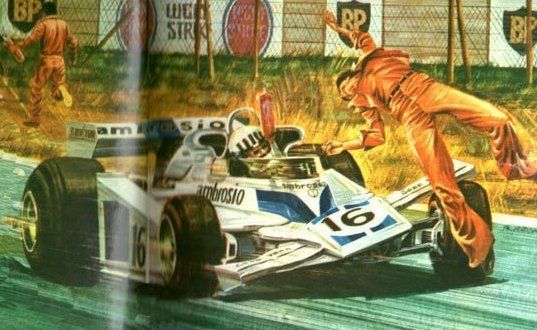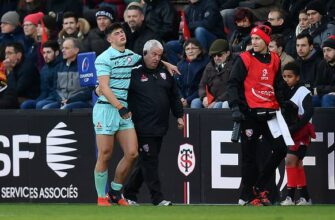In the cutthroat world of Formula 1, where careers can ignite and extinguish faster than a pit stop, the notion of a long-term partnership between a driver and a team often feels like a quaint relic. Yet, these enduring bonds—often spanning a decade or more—forge legends, define eras, and offer a stark contrast to the sport`s famously transient nature. As Lewis Hamilton embarked on a new chapter with Ferrari in 2025, leaving behind his record-setting 12-season tenure with Mercedes, it cast a spotlight on the true rarity and profound significance of such steadfast alliances.
The End of an Era: Hamilton`s Unprecedented Mercedes Chapter
Lewis Hamilton`s departure from Mercedes after 12 seasons (2013-2025) marks the close of arguably the most dominant and iconic driver-team partnership in modern Formula 1. This alliance delivered an astonishing six World Championships for Hamilton, cementing both his and Mercedes` places in motorsport history. His journey began with McLaren in 2007, but it was with the Silver Arrows that his legacy became truly indelible. For over a decade, Hamilton wasn`t just a driver for Mercedes; he was the face of their ambition, the spearhead of their technological prowess, and a crucial element in their unparalleled success. Such a prolonged period of shared triumph is a testament to mutual trust, relentless innovation, and a collective hunger for victory that seldom wanes.
Max Verstappen and Red Bull: The New Standard Bearers
With Hamilton`s shift, the mantle of the longest active tenure with a single team now rests firmly on the shoulders of Max Verstappen. Having raced for Red Bull since 2016, Verstappen’s journey with the Austrian outfit has already spanned ten seasons and shows no signs of slowing down. Much like Hamilton and Mercedes, Verstappen and Red Bull have become synonymous with a new era of dominance. Their partnership exemplifies raw talent nurtured by a team built around a singular driving force. The synergy between Verstappen`s aggressive style and Red Bull`s engineering philosophy has proven to be a formidable combination, promising to rewrite record books for years to come.
Beyond the Podium: Why Longevity Matters in F1
In a sport where the smallest margin can determine victory, the stability offered by a long-term driver-team relationship is a genuine competitive advantage. It`s more than just contractual obligation; it`s a deep, almost symbiotic understanding that develops over countless hours of testing, racing, and technical briefings.
- Engineering Synergy: A veteran driver knows their team`s car intimately. They can provide nuanced feedback, helping engineers refine chassis, aerodynamics, and power unit integration to an exquisite degree. The car essentially becomes an extension of the driver.
- Team Cohesion: A stable driver lineup fosters a robust team environment. Mechanics, engineers, and strategists build trust and communication channels that are finely tuned, leading to fewer errors and quicker reactions under pressure.
- Brand Identity & Legacy: Drivers like Michael Schumacher with Ferrari or Jim Clark with Lotus weren`t just employees; they became the embodiment of their teams. Their names are intertwined with the team`s history, creating a powerful narrative that resonates with fans and sponsors for generations.
- Strategic Stability: Long-term contracts allow teams to plan for the future with confidence, investing in specific car philosophies and driver development programs without the constant churn of new personalities and preferences.
The Elite Club: A Look at F1`s Most Dedicated Partnerships
While Hamilton`s 12 seasons with Mercedes set a modern benchmark, he joins a prestigious group of drivers who have dedicated a significant portion of their careers to a single F1 constructor. These relationships are the bedrock upon which much of Formula 1`s rich history is built.
| Seasons | Driver | Team(s) | Years Active |
|---|---|---|---|
| 12 | Lewis Hamilton | Mercedes | 2013-2025 |
| 11 | Michael Schumacher | Ferrari | 1996-2006 |
| 10 | Max Verstappen | Red Bull | 2016-Present |
| 9 | Mark Webber | Jaguar/Red Bull | 2003-04, `07-13 |
| 9 | David Coulthard | McLaren | 1996-2004 |
| 9 | Jim Clark | Lotus | 1960-68 |
| 9 | Jacques Laffite | Ligier | 1976-82, `85-86 |
| 9 | Mika Hakkinen | McLaren | 1993-2001 |
| 8 | Kimi Räikkönen | Ferrari | 2007-09, `14-18 |
| 8 | Felipe Massa | Ferrari | 2006-13 |
The Irony of Loyalty in a Mercenary Sport
It`s not without a certain irony that in a sport often characterized by immense financial stakes and a driver market that can shift dramatically year to year, true longevity becomes a defining hallmark. Drivers are, in essence, highly skilled mercenaries, paid to deliver results regardless of who signs their paycheck. Yet, those who establish deep roots with a single team often achieve the greatest heights and leave the most profound marks. Perhaps it`s the comfort of familiarity, the absence of constant adaptation, or simply the profound human desire for belonging that allows these partnerships to flourish where others falter.
As the F1 circus continues its relentless global tour, the stories of these enduring driver-team relationships remind us that while technology and speed define the spectacle, it`s the human element—the dedication, loyalty, and shared ambition—that truly crafts the sport`s most compelling narratives. The grid may constantly evolve, but the legacy of unwavering commitment will forever remain a cornerstone of Formula 1 history.







